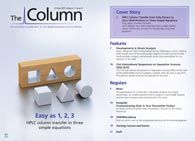Digital Microfluidics Enables Analysis of Multiple Steroid Hormones in Core-Needle Biopsy Samples
Researchers from the University of Toronto in Canada have developed a novel approach using digital microfluidics to analyze multiple steroid hormones in small tissue samples (1–10 mg) collected using core-needle biopsy (CNB) sampling.
Photo Credit: doram/Getty Images

Steroid hormone testing in the clinic relies on immunoassays or liquid chromatography tandem mass spectrometry (LC–MS–MS) analysis of blood or urine samples, but there are cases where it is necessary to analyze tissue, such as in the case of hormone-sensitive breast cancers. Researchers from the University of Toronto in Canada have developed a novel approach using digital microfluidics to analyze multiple steroid hormones in small tissue samples (1–10 mg) collected using core-needle biopsy (CNB) sampling.1
Steroid hormones are vital to the normal functioning of the body, but also play a key role in disease, specifically breast cancer. The National Cancer Institute, USA, estimate that up to 70% of breast cancers are oestrogen-sensitive - oestrogen activates abnormal cell-proliferation and growth - and require hormone therapy treatment.2 Corresponding author Sara Abdulwahab told The Column: “According to the WHO and American Cancer Society, breast cancer is the most common cancer in worldwide, and second leading cause of cancer death. The main challenges in diagnosis, staging, and treatment of the breast cancer arise from lacking the simple testing tools that allows for regular screening and detection of the disease, a problem that is exacerbated by the fact that patients exhibit individual variations and show different responses to similar preventive or treatment measures.”
Clinicians routinely monitor steroid hormone levels in urine or blood samples using immunoassays or LC–MS–MS; however, analyzing hormones in tissue rather than body fluids can give a more accurate picture. Tissue sections (around 500 mg) are taken using surgical biopsy under general anaesthetic at a hospital and can result in scarring. An alternative method is CNB sampling, performed using a hollow needle under local anaesthetic to remove a smaller “core” of tissue (1–10 mg). It is not a routinely used technique for analysis because the small sample size is analytically challenging.
The team developed a digital microfluidic (DMF) device to extract steroids - estradiol, androstendione, testosterone, and progesterone - from CNB tissue samples using the open-source DropBot control system including a solid-phase extraction cleanup step. Each tissue sample was placed on the bottom plate of the device and then incubated with extraction solvent, which was subsequently delivered to a porous polymer monolith disc. Following extraction, samples were analyzed using high performance LC–MS–MS.
Abdulwahab explained: “In this work, we analyzed steroids from ~5 mg tissue samples, which is extremely small (not compatible with macroscale quantification techniques), and solid (not a good match for channel-based microfluidics). We have worked towards solving these problems, by developing an integrated channel-free digital microfluidics extraction and clean-up steps, relying on porous polymer monolith discs to clean up sample extracts.”
The DMF–HPLC–MS–MS method was applied to the analysis of 32 breast tissue CNB samples (from 2–8 mg) from participants in a study set up to evaluate the effects of hormone therapy. The paper reports that the limits of detection were between 3.6 fmol for estradiol, 1.6 fmol for androstendione, 5.8 fmol for testosterone, and 8.5 fmol for progesterone. Although the work is promising, there is still on-going validation required to enable introduction into the clinical environment. - B.D.
References
1. J. Kim et al., Analytical Chemistry DOI: 10.1021/ac5043297 (2015).
2. www.cancer.gov/cancertopics/types/breast/breast-hormone-therapy-fact-sheet
This story was featured in The Column. Click here to view the full issue>>

New Method Explored for the Detection of CECs in Crops Irrigated with Contaminated Water
April 30th 2025This new study presents a validated QuEChERS–LC-MS/MS method for detecting eight persistent, mobile, and toxic substances in escarole, tomatoes, and tomato leaves irrigated with contaminated water.

.png&w=3840&q=75)

.png&w=3840&q=75)



.png&w=3840&q=75)



.png&w=3840&q=75)








